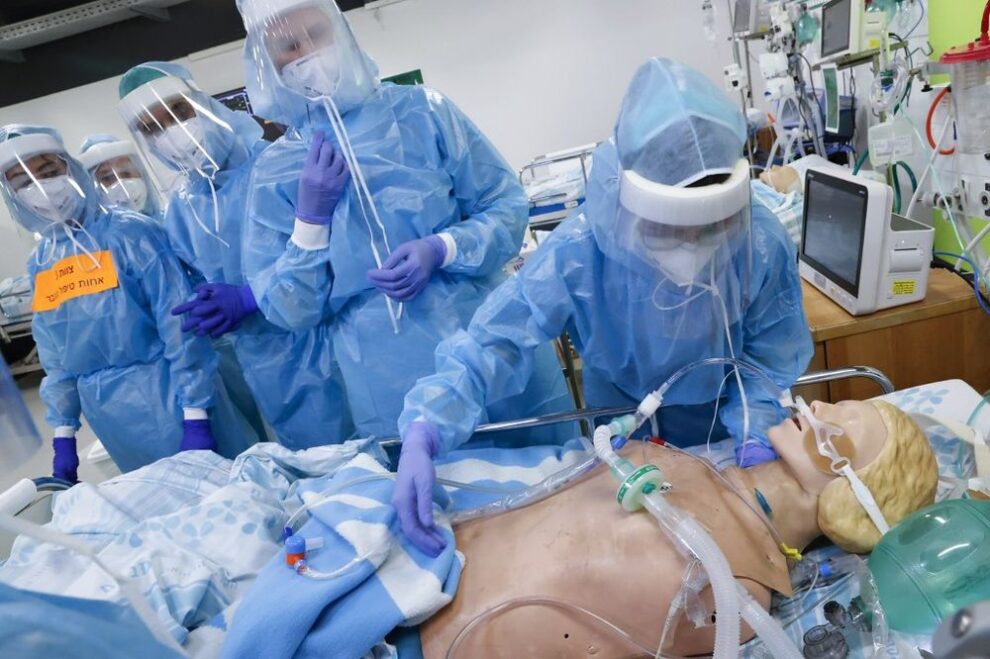The field simulation unit trains emergency responders, doctors, nurses and even soldiers in the most realistic way possible with no patient at risk
The patient is cold and unresponsive. The first responders rush to check vitals. They frantically perform CPR. A defibrillator is ready to deliver a shock.
The patient’s acting is admittedly a little plastic—because he’s made of silicone. Despite that, he’s no dummy.
“The mannequin responds by changing vital signs, voices, the sounds you hear on a stethoscope—anything from basic stuff to the more advanced patient care,” explains Dr. Oren Wacht, the academic director of the Field Medical Simulation Center.
This is one of Israel’s most advanced simulators to teach first responders, and when every second counts, this training ensures emergency personnel know exactly what to do. There is no need to explain to the medical community why simulation is necessary—everyone knows its value.
“Anyone who has experienced a high fidelity simulation knows how necessary it is for making better care providers,” says Wacht.
At Israel’s Ben Gurion University of the Negev (BGU), the field simulation unit trains emergency responders, doctors, nurses and even soldiers in the most realistic way possible, while not putting a single patient at risk.
“What’s happening here in this simulation center is that we have the ability to teach students in a controlled clinical environment where it’s safe to make mistakes—these advanced mannequins can die many times a day without doing any harm, but the students have an amazing opportunity to learn clinical skills,” says Wacht.
And while the patient is fake, the response is real.
“Sometimes they bring in actors and it’s very stressful because they act like real patients, and they are very good at what they do. It might not be as stressful as the real environment, but it comes pretty close,” says Annael Shaw, a second-year student at the Department of Emergency Medicine.
And with the touch of a screen, the instructor can make these dummies respond exactly as needed—and around the clock.
“The instructor can put all the data in this iPad and the instructor can change the heart rate… to simulate another kind of arrhythmia. This one is like ventricular fibrillations—you need to do CPR and shock the patient. Watch me charge the monitor here and deliver the shock,” explains Menahem Blumenthal, General Manager of the Field Medical Simulation Center.
And the plastic patient is detailed, outside and in.
“All the mannequins are hyper realistic, now we can see the vocal chords, the trachea, I am doing a tracheal intubation here and can see all the anatomy inside the mannequin,” adds Blumenthal.
That is a significant bonus over actors—you can program these dummies to display damage, so students know what to look for in the real world—something you can’t do with actors.
“It gives us the ability to simulate real life situations using the equipment to do what we would do in real life, as opposed to just talking or reading about it and finding a real life situation completely different,” says Shaw.
The end result? Training the next generation of emergency responders with the next generation of equipment, so they are unfazed by humanity’s oldest problems.
Source : i24 News





































